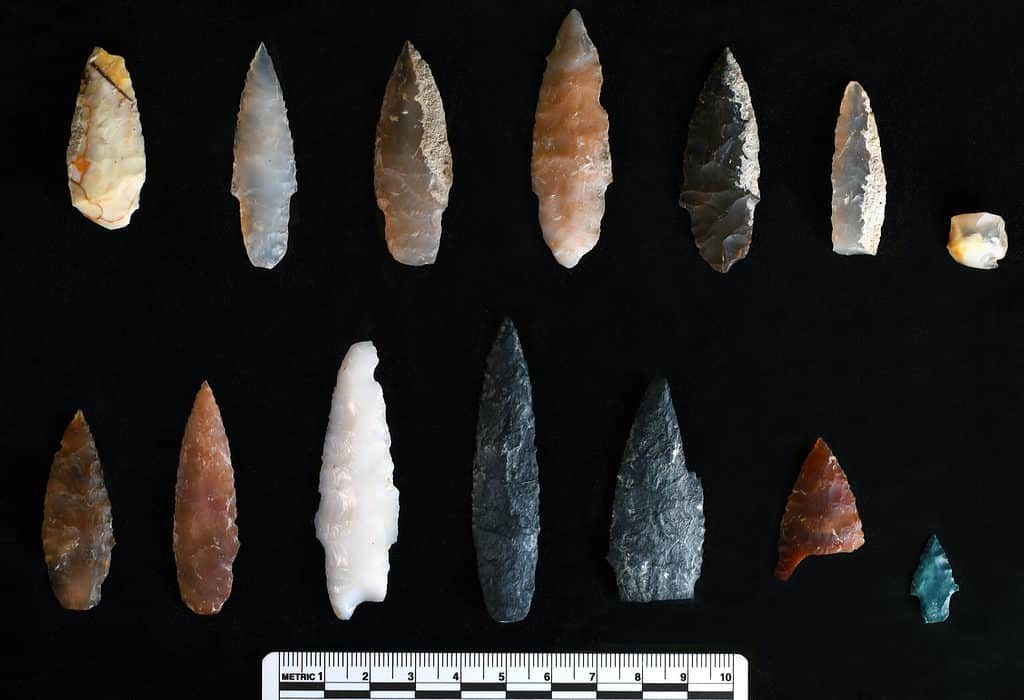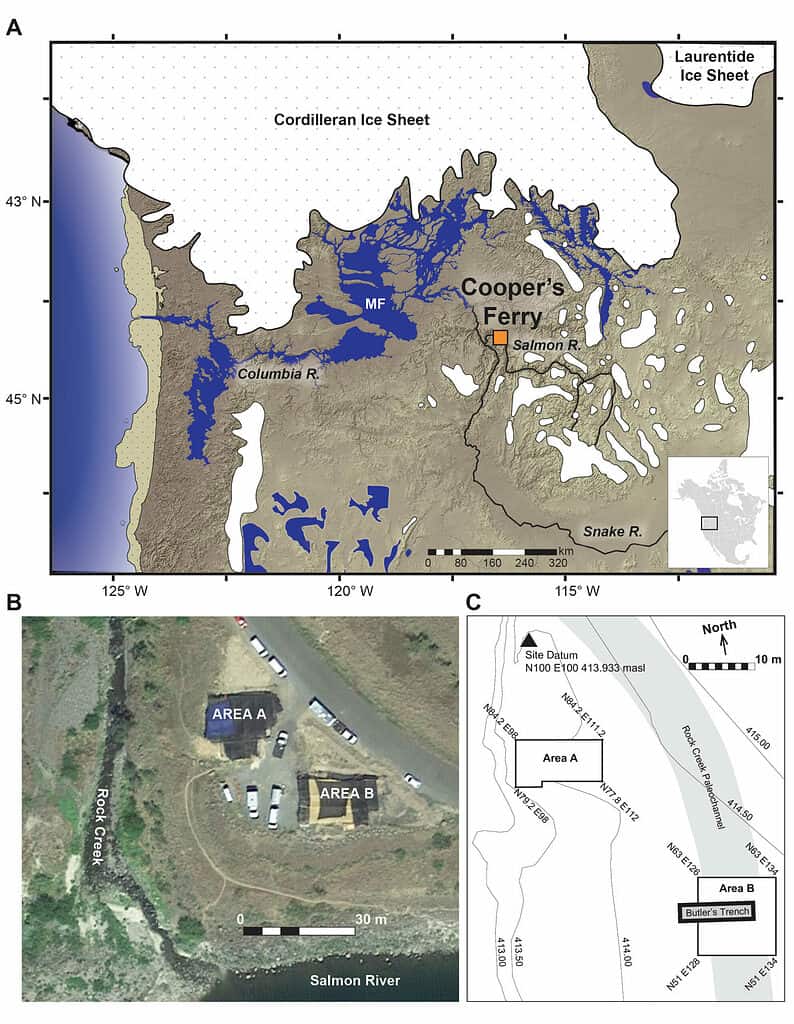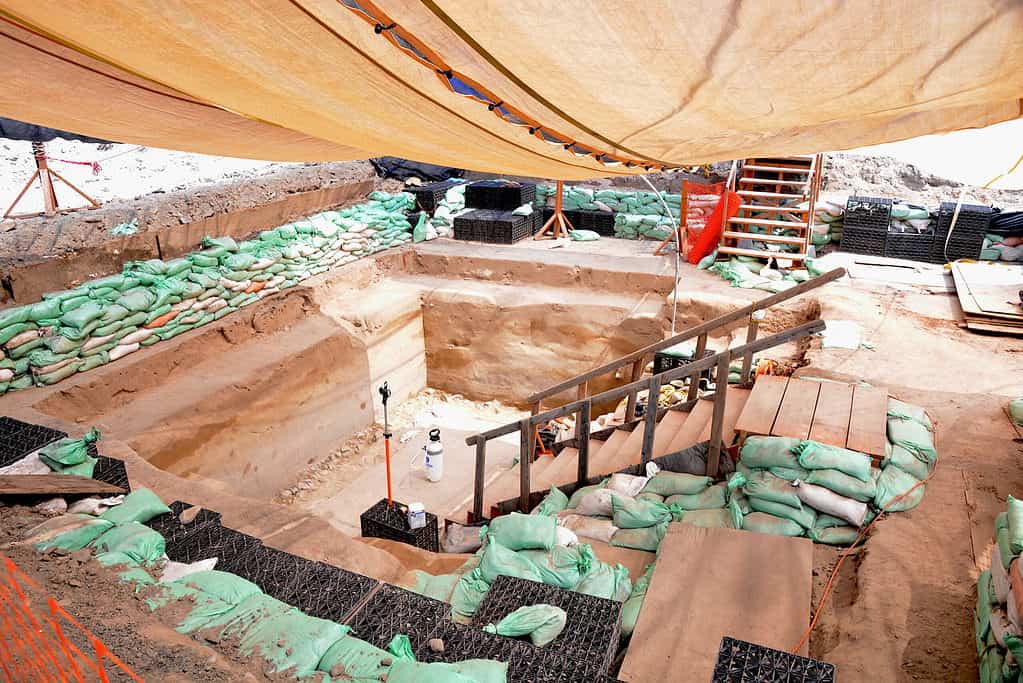
The Cooper Ferry archaeological site is one of the most remarkable in the Americas, providing valuable archaeological findings for over fifty years, ranging from stone-made tools to animal bones. Researchers from Oregon State University worked on it for several summers between 2012 and 2017, and yet again, they uncovered numerous artifacts — this time, from some of the continent’s earliest human settlers.
Among these artifacts are 13 fragmentary projectile points — small, razor-sharp man-made projectiles ranging from about 0.5 inches to 2 inches long.
When researchers carbon-dated them, they found that the projectiles date from 15,700 years ago, some 3,000 years older than the Clovis fluted points commonly found throughout North America.
Some years ago, finding any man-made object this old in the Americas would have caused quite a stir, as some archaeologists didn’t even believe there were any humans on the continent at the time. But recent research is suggesting more and more that there were people in the Americas over 15,000 years ago. But while recent research has found evidence of human activity, this is showing their actual level of technology in great detail, the authors of the new study say.
“From a scientific point of view, these discoveries add very important details about what the archaeological record of the earliest peoples of the Americas looks like,” said Loren Davis, an anthropology professor at OSU and head of the group that found the points. “It’s one thing to say, ‘We think that people were here in the Americas 16,000 years ago’; it’s another thing to measure it by finding well-made artifacts they left behind.”

The projectiles would have been very efficient, being capable of killing pretty much any animal these settlers would have hunted. They were likely attached to darts, not arrows or spears, and despite being small, they could have done a lot of damage.
“There’s an assumption that early projectile points had to be big to kill large game; however, smaller projectile points mounted on darts will penetrate deeply and cause tremendous internal damage,” he said. “You can hunt any animal we know about with weapons like these.”
The archaeologists were thrilled to have found such an old place where early humans stored their hunting goods, but the projectile heads had yet another surprise: they look very similar to projectile points found in Hokkaido, Japan, and dating from 16,000-20,000 years ago. This suggests there could be a cultural (and possibly, even genetic) between the two ice age peoples, one from Asia and one from North America
“The earliest peoples of North America possessed cultural knowledge that they used to survive and thrive over time. Some of this knowledge can be seen in the way people made stone tools, such as the projectile points found at the Cooper’s Ferry site,” Davis said. “By comparing these points with other sites of the same age and older, we can infer the spatial extents of social networks where this technological knowledge was shared between peoples.”

Still, there is a bit of controversy regarding the dating of some of the artifacts found at Cooper’s Ferry and the matter is still not fully settled yet. But further excavations could help clarify the case.
The newly discovered artifacts are part of a larger set that contains over 65,000 items. Their location (down to the millimeter) and characteristics have been carefully noted and recorded for further study.
Journal Reference: Loren Davis, Dating of a Large Tool Assemblage at the Cooper’s Ferry Site (Idaho, USA) Dated ~15,785 cal yr B.P. Extends Age of Stemmed Points in the Americas, Science Advances (2022). DOI: 10.1126/sciadv.ade1248. www.science.org/doi/10.1126/sciadv.ade1248









